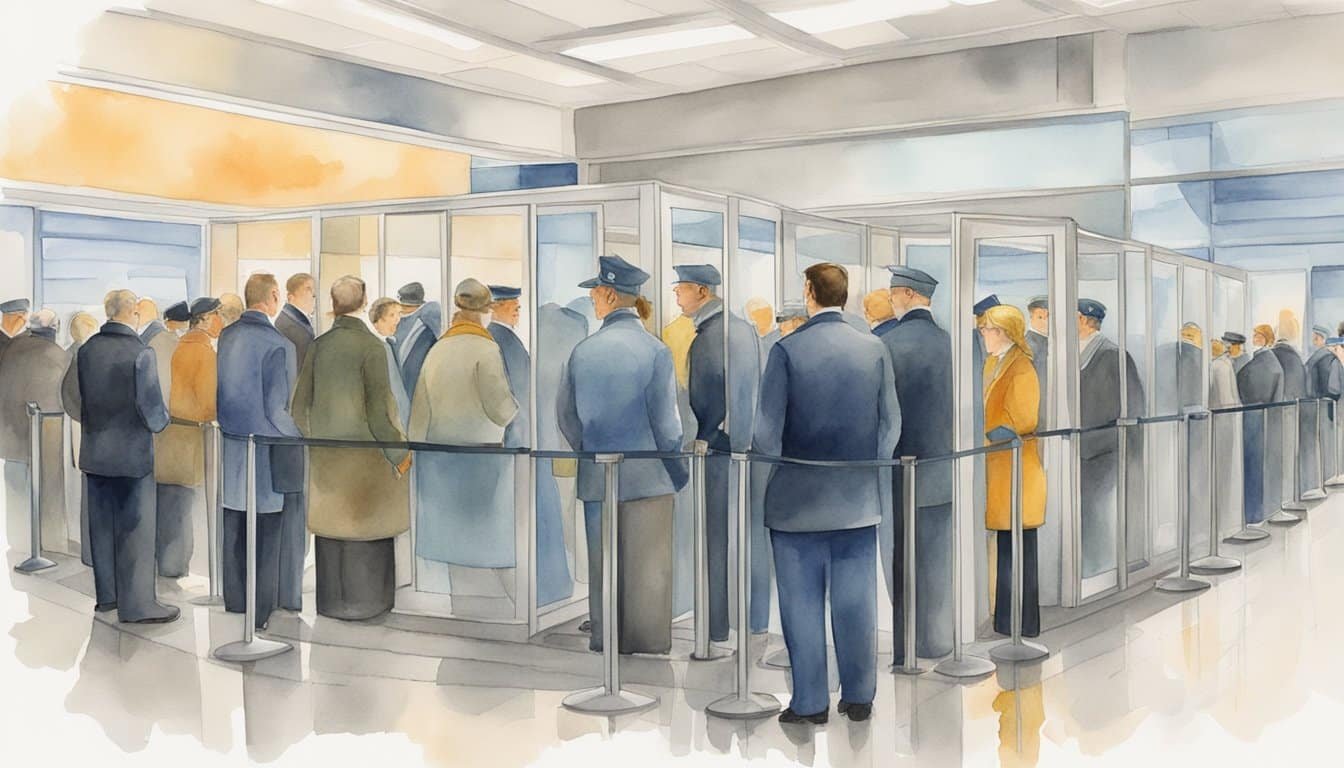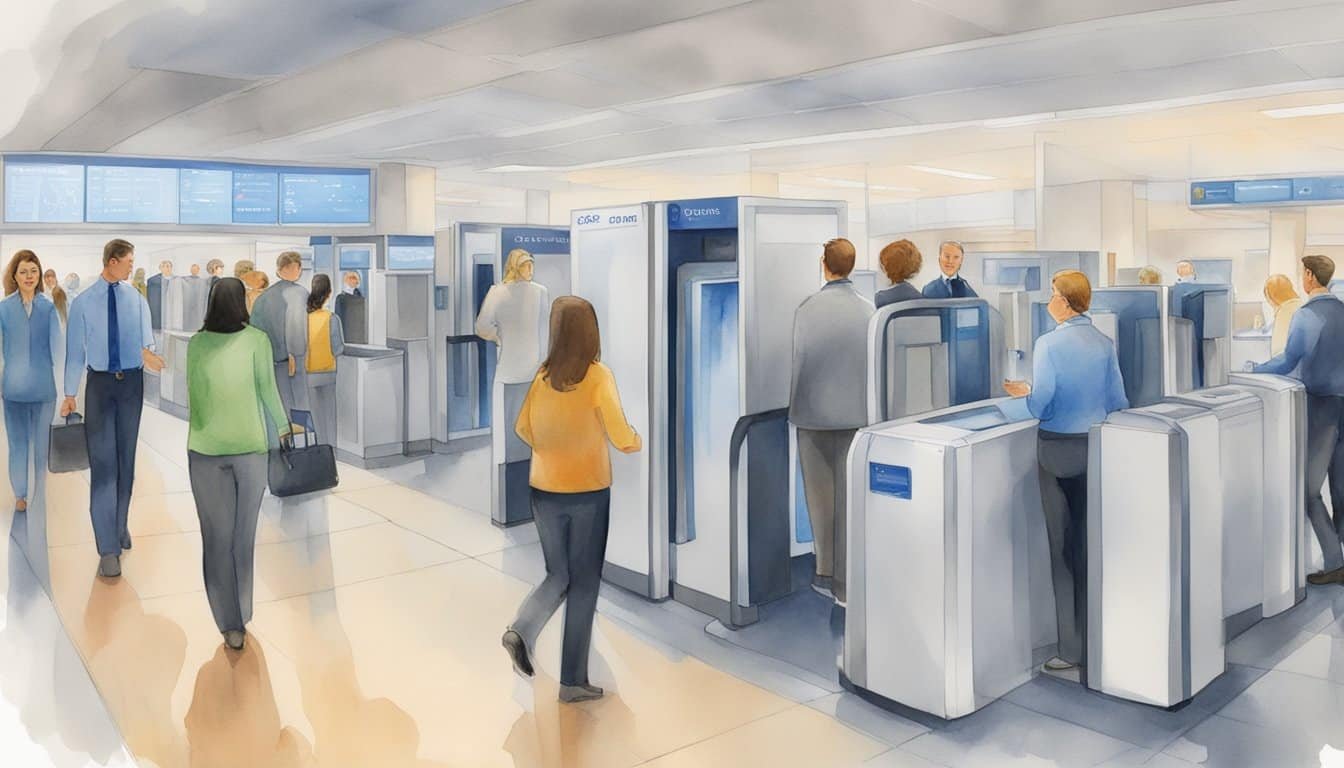Overview of TSA Full-Body Scanners
Transportation Security Administration (TSA) full-body scanners are a cornerstone of airport security, aiming to detect concealed items that could pose a threat on aircraft.
Purpose and Functionality
Full-body scanners serve as a critical layer of defense in TSA’s multi-tiered security protocol, working to spot potentially hazardous materials or weapons on passengers without physical contact. These systems fall into two main categories: the Advanced Imaging Technology (AIT) scanners, which use millimeter wave technology, and the backscatter machines, relying on low-level x-ray to image the body’s surface. Both types of scanners offer the benefit of detecting metallic and non-metallic items, including plastic explosives and ceramic weapons, which traditional metal detectors might miss.
Types of Full-Body Scanners
Millimeter Wave Scanners:
- Utilize non-ionizing radio frequency to produce a 3D image.
- The waves bounce off the body and back to the machine, constructing a visual image for TSA agents.
- Include automated target recognition software to protect passenger privacy by displaying a generic figure rather than a specific body outline.
Backscatter Machines:
- Emit low-level x-rays that reflect off the skin to create a two-dimensional image.
- Were more common in the past, but concerns about radiation exposure have led to their decreased use.
- Provided detailed images but have largely been replaced with AIT scanners for efficiency and enhanced privacy.
Through innovative security technologies, TSA continues to evolve the use of full-body scanners at security checkpoints, constantly updating protocols to ensure the safety and privacy of travelers.
Health, Privacy, and Security Concerns
While TSA full-body scanners enhance security measures, they stir debates on radiation exposure, personal privacy, and their true effectiveness in preventing threats.

Radiation and Health Risks
Passengers have raised questions about the potential health effects of full-body scanners, particularly regarding the use of backscatter x-ray devices. These machines, which employ low-level x-ray beams, have sparked conversations about cancer risk due to radiation exposure. However, these backscatter units were replaced by millimeter-wave scanners, which use non-ionizing radiofrequency waves deemed safer by various organizations. According to a study, millimeter-wave technology produces a level of radiation that is well within safety standards and poses a negligible risk to health.
Privacy and the Use of Body Scanners
The introduction of full-body scanners raised red flags regarding passenger privacy. Initially, scanners projected a near-nude image of the traveler to security personnel, making some passengers uncomfortable. In response, the TSA implemented privacy software that converts the image into a generic, avatar-like figure highlighting areas that require additional screening. Despite these advancements, organizations like the Electronic Privacy Information Center have expressed continuing concerns about the privacy implications of these machines.
Efficacy in Detecting Threats
The effectiveness of full-body scanners in detecting metallic threats and concealed weapons under clothing is well-documented. While these scanners significantly improve the detection of non-metallic items and liquids, some tests conducted by organizations such as ProPublica reveal that they can occasionally miss items, leading to ongoing discussions about their efficacy. Nevertheless, scanners are just one part of comprehensive security screening processes, which also include measures like TSA PreCheck, aimed at expediting and enhancing security checks.
Procedures and Passenger Options

When it comes to airport security, passengers face a screening process involving advanced imaging technology. Not everyone is keen on stepping into a body scanner, but they have choices and should know what’s ahead.
Opting Out and Alternatives
Passengers not comfortable with using airport body scanners have the right to opt out. Instead, they can undergo a pat-down by a TSA agent. This screening process is as thorough as the machine equivalent and is done to ensure safety while respecting personal preferences. Folks enrolled in TSA PreCheck may experience a streamlined process, generally sidestepping the body scanners for a simpler metal detector.
Future Developments in Security
Looking forward, new technologies aim to enhance both safety and privacy. Innovations like ThruVision can detect items under clothing from a distance without producing an image of the body itself. Meanwhile, millimeter-wave technology continues to evolve, promising a future where security checkpoints are not only safer but more comfortable for travelers. These advancements highlight the ongoing effort to balance security with individual rights, ensuring that screening processes remain both effective and respectful. Questions like “when was battery invented” may seem unrelated, but historical breakthroughs in energy storage have played a crucial role in powering modern security devices. As technology progresses, integrating efficiency with ethical considerations will be key to shaping the future of surveillance and protection.
Detailing these procedures and alternatives helps passengers navigate the what and how of airport security, keeping the journey as smooth as possible from check-in to boarding.

